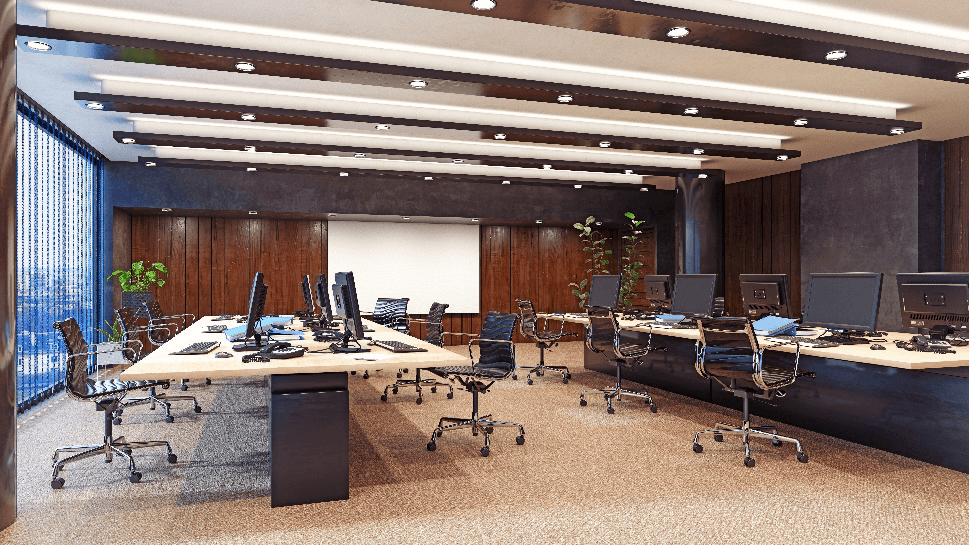
As we move towards a more sustainable future, it is essential that every aspect of our lives reflects this commitment to environmental consciousness – including our commercial interiors. The design of commercial spaces has a significant impact on the environment, from the materials used to the energy consumption of the space. With the rise of sustainable design practices, there has been a growing emphasis on creating commercial interiors that are not only aesthetically pleasing but also environmentally friendly.
One of the key principles of sustainable commercial interior design is the use of eco-friendly materials. This includes using renewable and recycled materials such as bamboo, cork, reclaimed wood, and recycled plastic. These materials not only reduce the demand for new resources but also help to lower the carbon footprint of the space. Additionally, choosing materials that are free from harmful chemicals and toxins can improve indoor air quality, creating a healthier environment for employees and visitors.
Energy efficiency is another important consideration in sustainable commercial interior design. By incorporating energy-efficient lighting, heating, and cooling systems, businesses can significantly reduce their energy consumption and lower their utility bills. Smart technologies such as motion sensors and programmable thermostats can further enhance energy efficiency by automatically adjusting settings based on occupancy and usage patterns. Investing in renewable energy sources such as solar panels can also help to offset the energy needs of the space and reduce reliance on fossil fuels.
In addition to materials and energy efficiency, sustainable commercial interiors also focus on water conservation. Installing low-flow plumbing fixtures, such as faucets and toilets, can significantly reduce water usage and lower utility costs. Water-efficient landscaping practices, such as using native plants and drip irrigation systems, can also help to minimize water consumption and promote biodiversity. By implementing these water-saving measures, businesses can contribute to water conservation efforts and reduce their impact on the environment.
Another key aspect of sustainable commercial interior design is waste reduction. By incorporating recycling and composting programs, businesses can divert waste from landfills and promote a circular economy. Designing spaces with flexibility in mind can also help to extend the lifecycle of furniture and fixtures, reducing the need for frequent replacements. Repurposing existing materials and furniture can not only save money but also add a unique and personalized touch to the space.
Beyond the environmental benefits, sustainable commercial interiors can also have a positive impact on the well-being and productivity of employees. Studies have shown that access to natural light, greenery, and outdoor views can improve mood, reduce stress, and increase productivity. By incorporating biophilic design elements such as living walls, indoor plants, and natural materials, businesses can create a more inviting and inspiring work environment for their employees.
Furthermore, sustainable commercial interiors can enhance a company's brand image and attract environmentally conscious customers and clients. By demonstrating a commitment to sustainability through the design of their spaces, businesses can differentiate themselves in the market and build a positive reputation among stakeholders. Green certifications such as LEED (Leadership in Energy and Environmental Design) can also provide validation of a company's sustainable practices and help to showcase their environmental commitment.
In conclusion, the rise of sustainable commercial interiors reflects a growing awareness of the importance of incorporating environmental considerations into every aspect of our lives. By designing commercial spaces that prioritize eco-friendly materials, energy efficiency, water conservation, waste reduction, and employee well-being, businesses can not only reduce their environmental impact but also create healthier and more inspiring work environments. As we look towards the future, it is clear that sustainable design practices will continue to shape the way we approach commercial interior design, driving innovation and promoting a more sustainable and resilient built environment.
